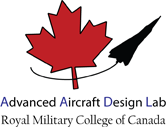Research¶
Our group expertise is in the areas of aircraft design (ACD) and system of systems (SOS), applied aerodynamics (AA), guidance navigation and control (GNC), artificial intelligence (AI) and multidisciplinary analysis and optimization (MDAO).
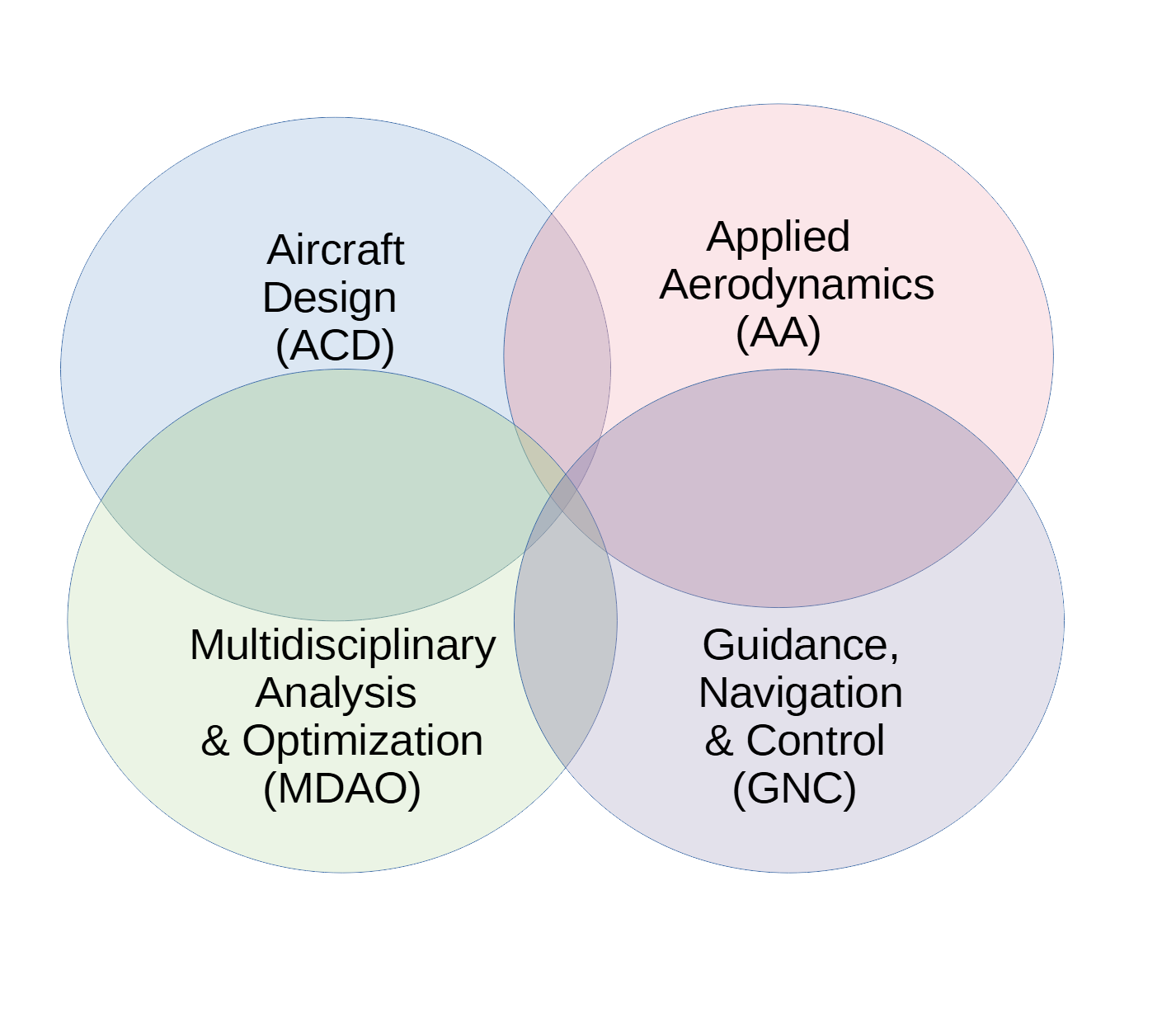
Current Projects¶
ACD/SOS - Coupled Optimization of Aircraft Family Design and Fleet Assignment¶
The design of future aircraft takes into great consideration the current market requirements and future needs of potential operators. In spite of such efforts, the design of new aircraft and the assignment of these aircraft to a specific route in the operator’s network are loosely coupled. Current research focuses on closely coupling the design of a family of aircraft and the allocation of these aircraft in a route network and to examine the flexibility offered by such a family and the effects on environmental and economic considerations. [RPJB21], [JP17a], [JP12] [JP13a] [JP16b]
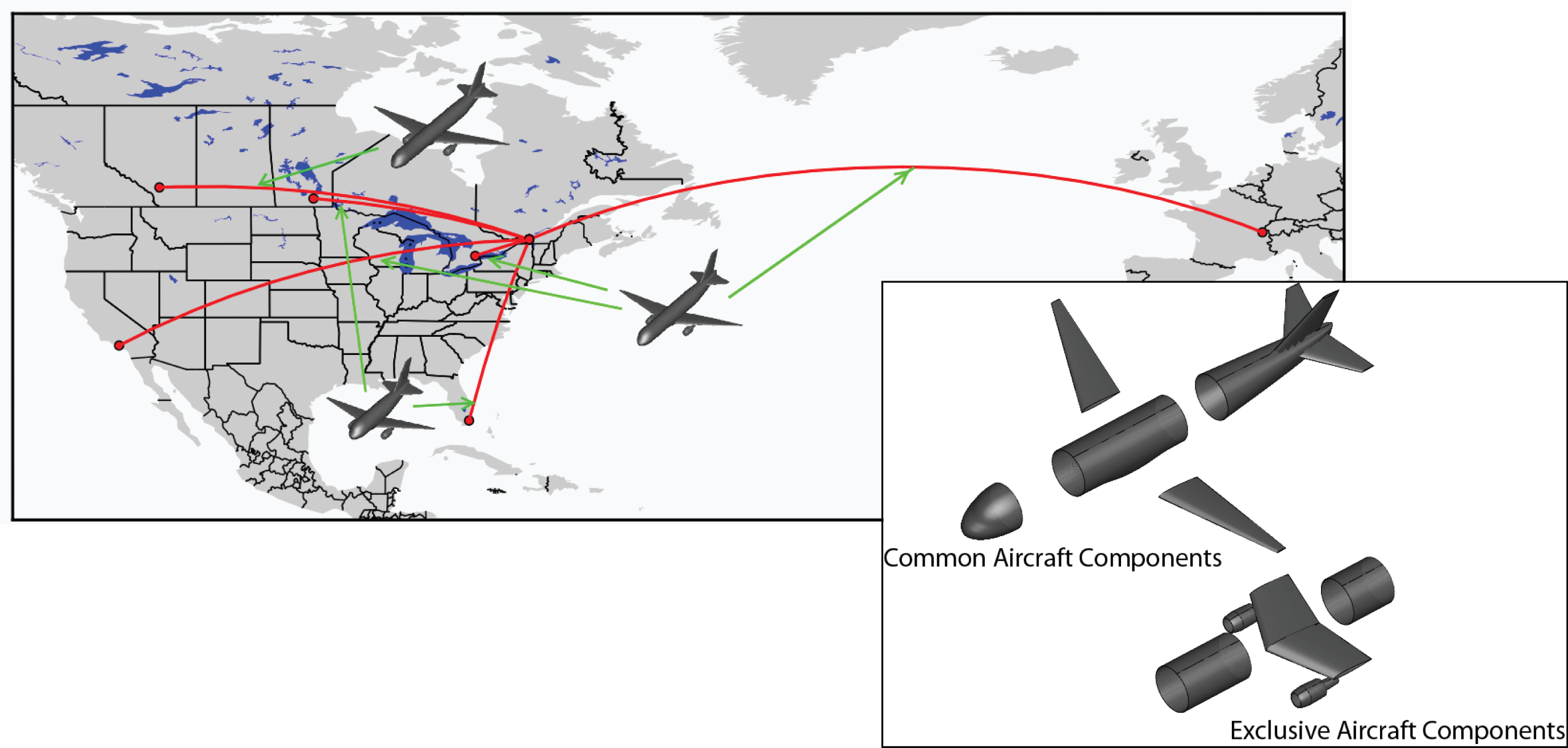
ACD/MDAO - Hybrid Electric Aircraft Design and Optimization¶
Hybrid electric aircraft are proposed as a potential next-generation aircraft design, improving fuel efficiency and emissions. Hybrid electric powertrains are more complex than conventional propulsion systems, requiring more components which increases the design and operation complexity. This research projects investigates the multidisciplinary couplings between hybrid electric aircraft design and operation, using nested optimization formulations. Hybrid electric aircraft solutions are proposed for regional aircraft, improving fuel efficiency performance over the best-in-class turboprop aircraft used today. The optimization method determines aircraft geometry, mission profile and powertrain sizing as well as the power management method to maximize the fuel efficiency of the aircraft over the mission.
Results show the power charge cycles over a mission to maximize energy recovery from the turboshaft generator, as well as the changes in overall aircraft design to accommodate the weight and balance changes due to hybrid electric powertrain. Results also compared the performance and design differences between current aircraft retrofitted with hybrid electric powertrains and clean-sheet hybrid electric aircraft designs, showing the need for clean-sheet aircraft design to best utilize the performance features of hybrid electric. [RPJ24]
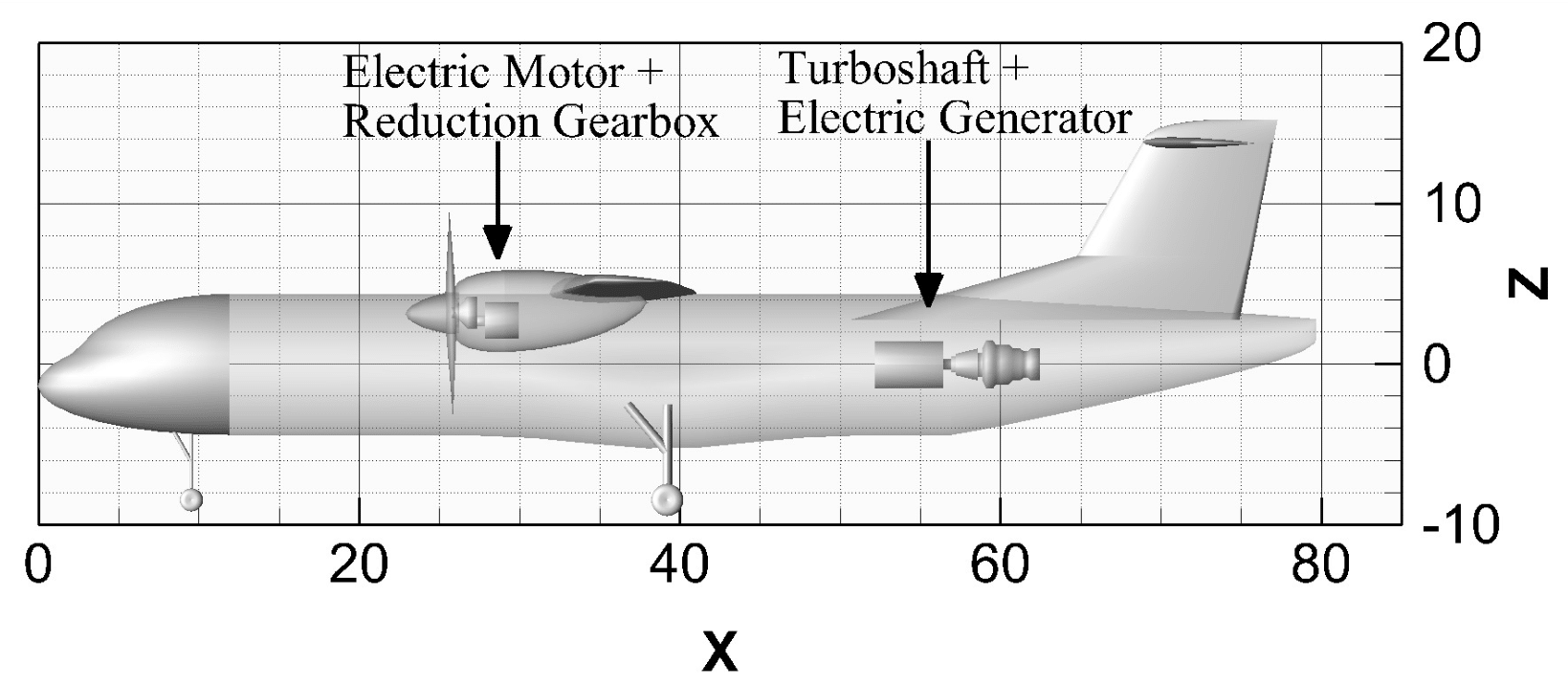
|
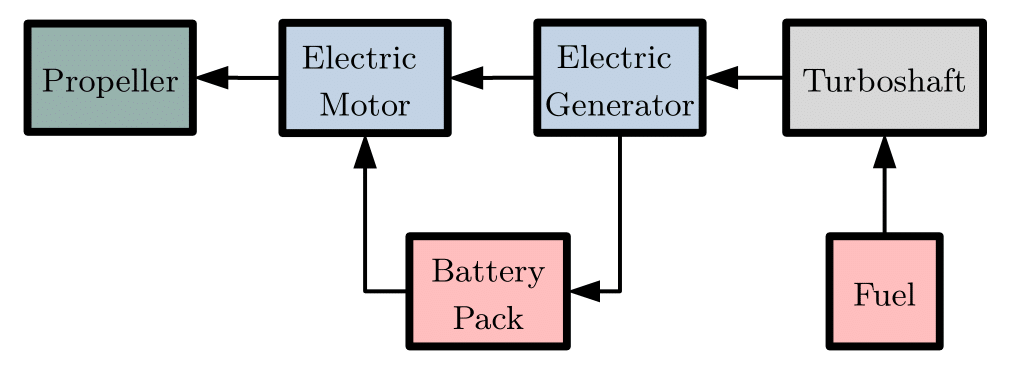
|
AA - Leading-Edge Tubercle Investigations for Dynamic Stall Effects¶
Dynamic stall is a phenomenon present in many applications, such as rotorcraft and wind turbines. It occurs due to the cyclic pitching of lifting bodies, resulting in hysteresis of the aerodynamic coefficients. This research focuses on applying leading-edge tubercles to improve the dynamic stall behaviour of wings, by reducing the aerodynamic hysteresis, as well as improve the aerodynamic efficiency. This improvment results in more consistent aerodynamic loading, as well as reduces certain stall behaviours, such as that seen in the retreating blades of rotorcraft. [NP22]

AA/ACD/GNC - Application of Tubercles for Tilt-Wing Transition¶
Tilt wing vehicles combine the utility of rotory wing aircraft and forward flight performance of fixed wing aircraft. Transition is a critical flight phase for tilt wing vehicles where the aircraft experiences extreme angles of attack as it transitions from vertical flight to horizontal flight. Current research explores the application of leading edge tubercles on tilt wing vehicles to enhance post-stall performance and improve the safety of transition. [SCPA22]
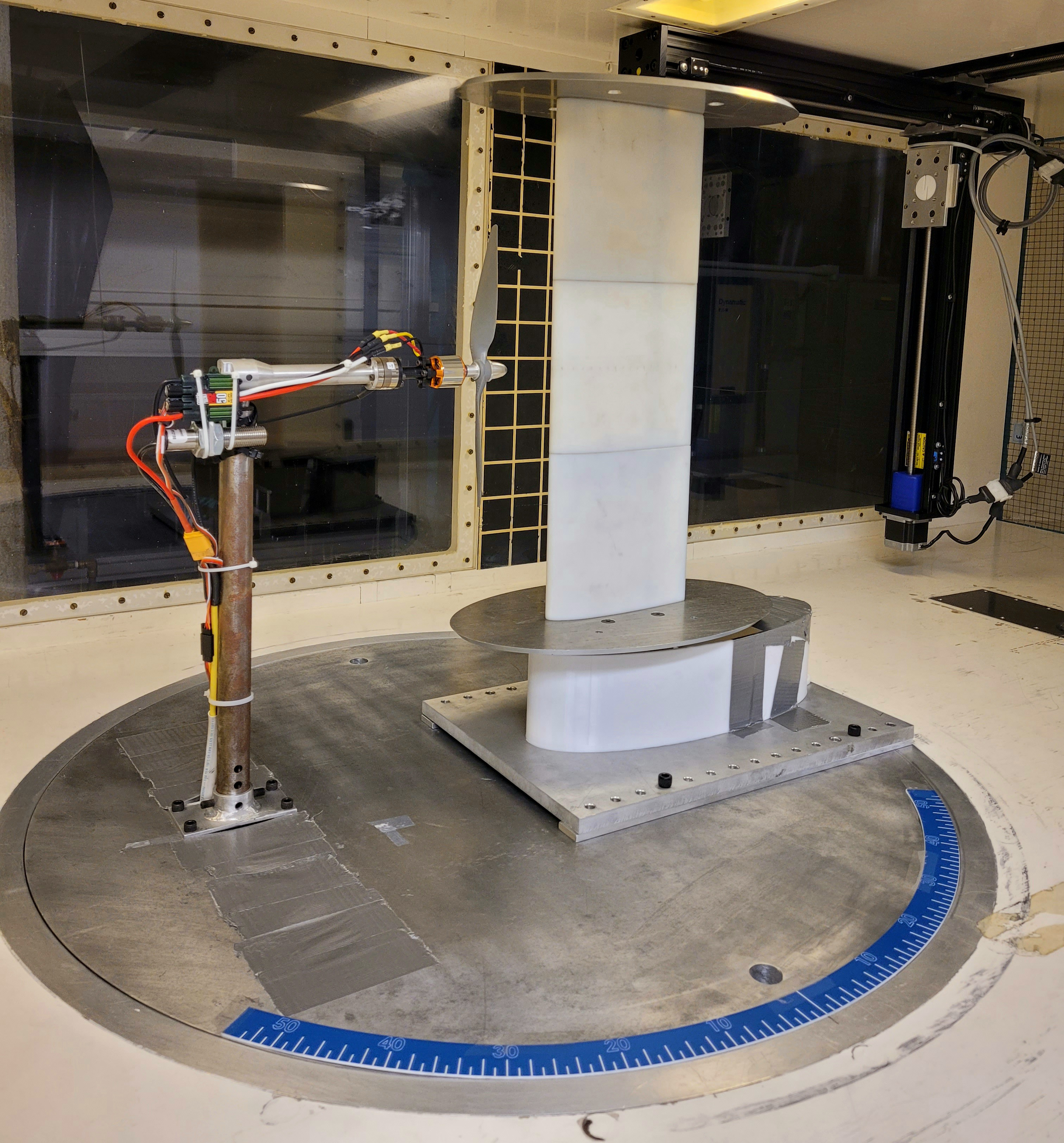

AA/MDAO - Application of Tubercles on Vertical Axis Wind Turbines¶
The passive ability of vertical axis wind turbines (VAWTs) to generate energy from the wind in any direction makes them a suitable clean energy solution to be employed in urban areas and remote communities. However, they suffer from reduced power outputs and shorter fatigue lives than their horizontal axis counterparts, resulting in higher costs per unit of power generated. The application of leading-edge tubercles on VAWT blades is studied through a Double-Multiple Streamtube Model and an experimental straight-bladed VAWT rig. This research also includes a multi-objective optimization of VAWTs using leading-edge tubercles to determine the configuration for lowest cost per unit of power. [HPJD22]
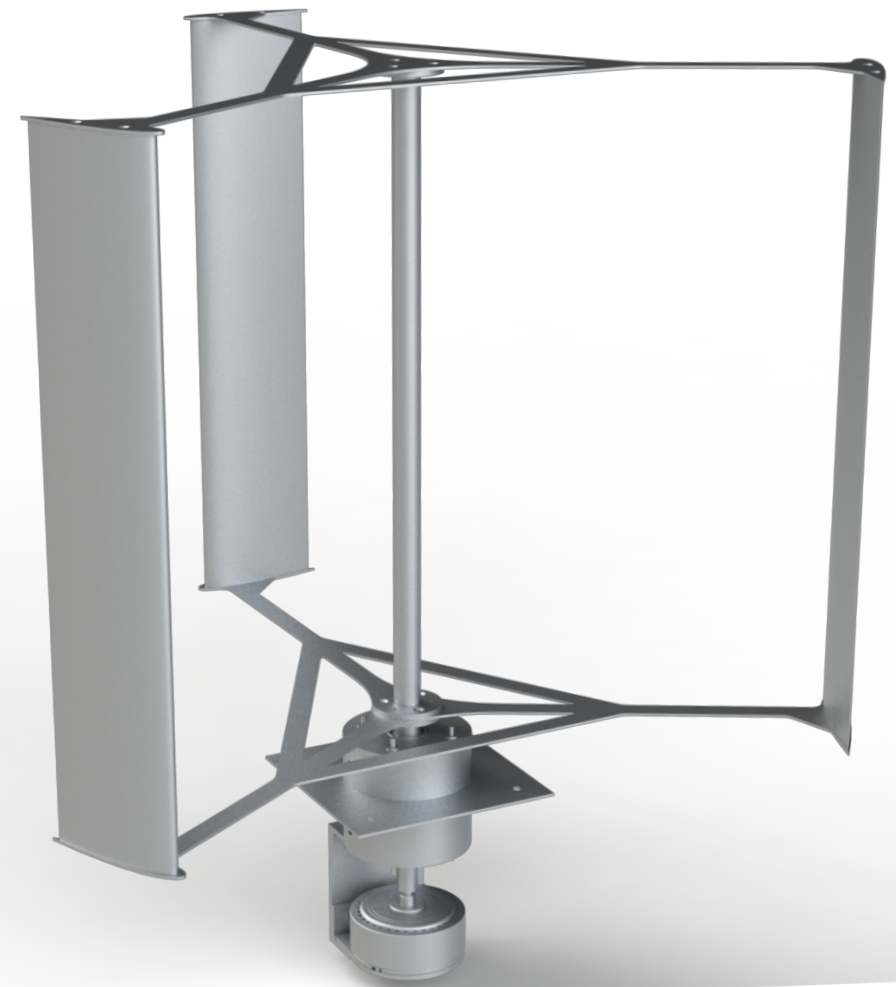
|
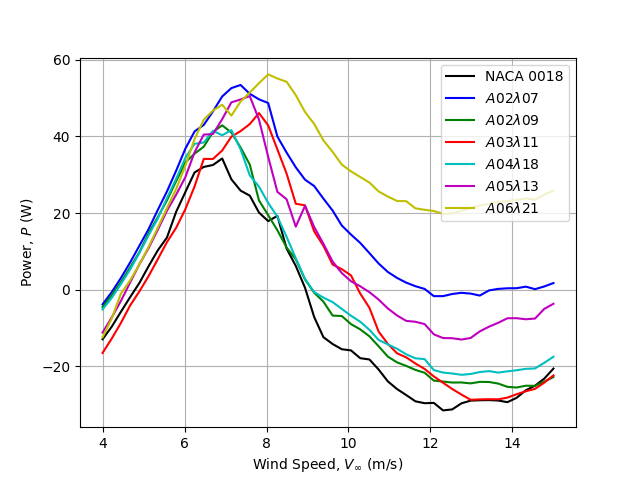
|
AA - Application of Leading-Edge Tubercles to Rotorcraft Blades¶
This study analyzes the performance and noise effects in hover and forward flight of applying leading edge tubercles to a rotor blades. From these initial study the research also optimizes optimal tubercled blade configurations and validates the results using measurements from a high rpm whirl tower experimental rig. [CP23], [CDP22], [CNP21], [CPJ20]
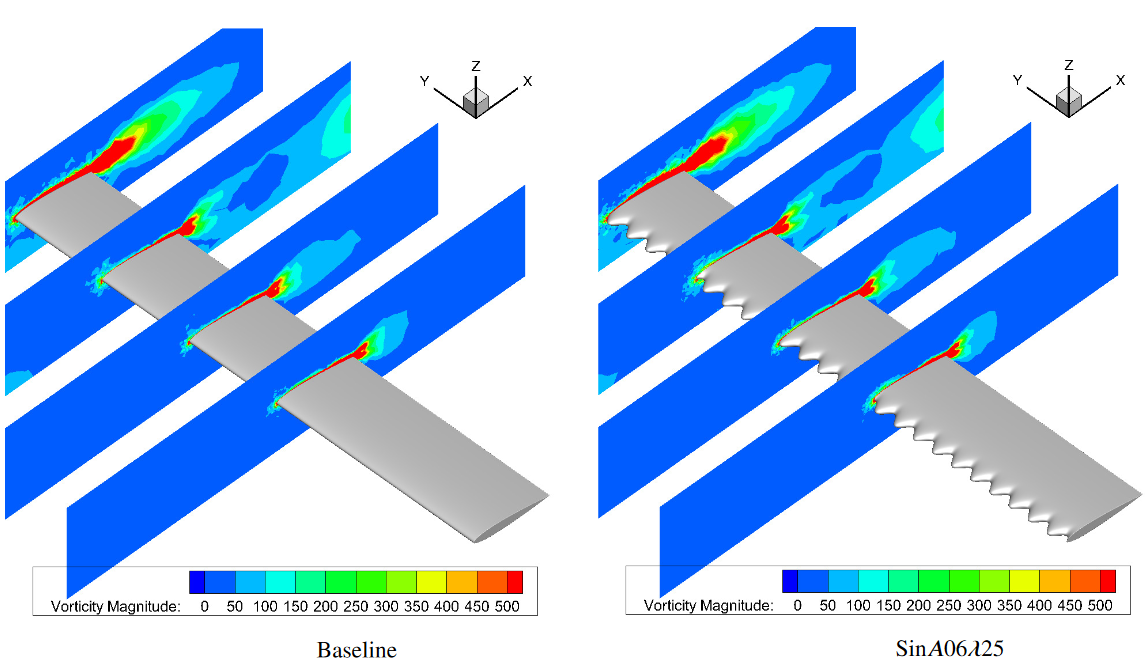
AA - Leading-Edge Tubercles in Transonic Flow¶
This research explores the effect of leading-edge tubercles periodic pressure variations between the peak and valley regions in transonic flow and their effect of drag divergence drag. [CLBRE21], [CPJLB20], [LBPA19], [LBPJ19], [PA18], [APF18], [APF17]
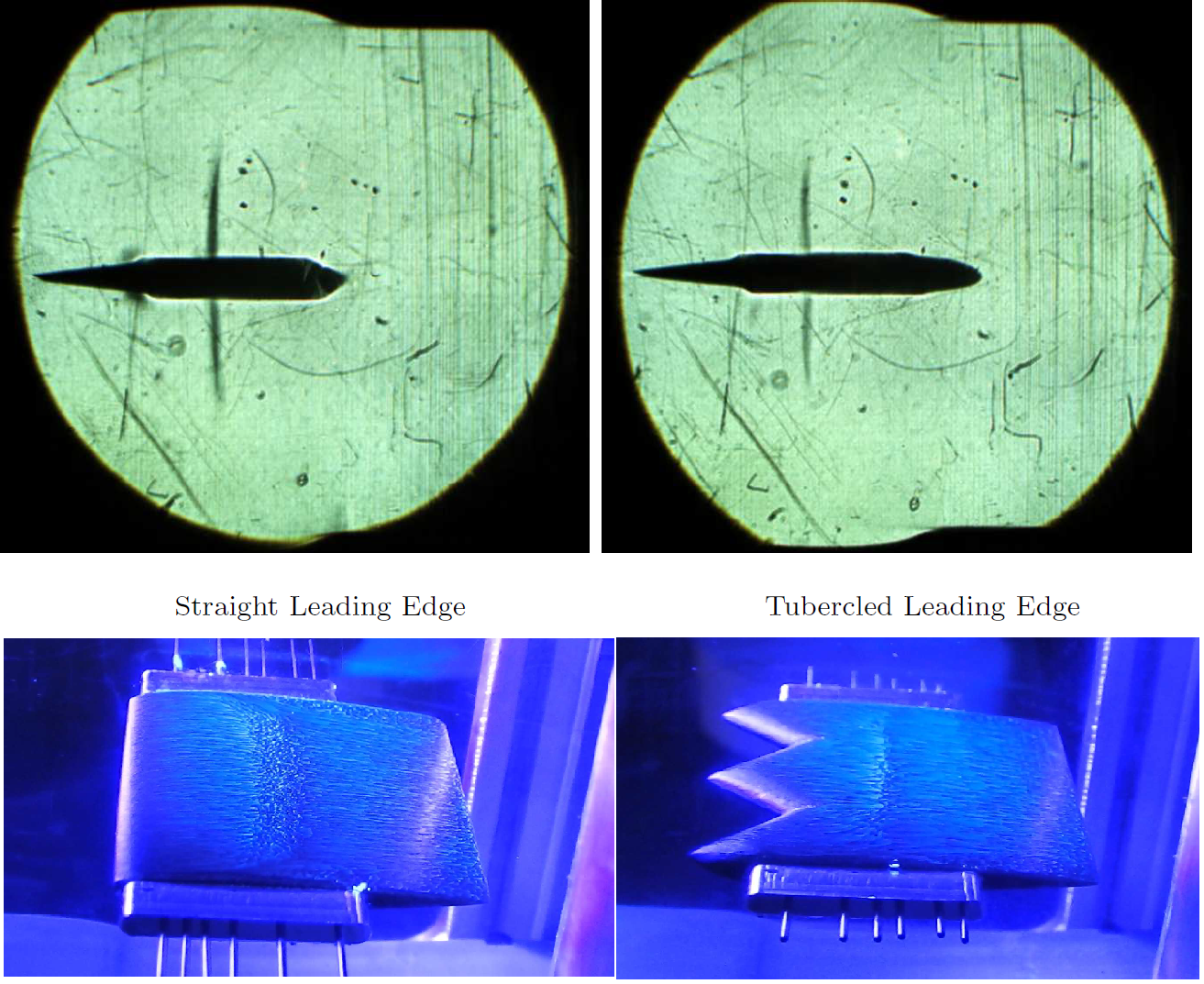
AA - Aerodynamic Analysis of Air Vehicles¶
Various aeronautical platforms require computational fluid dynamics simulations to provide more information than is available in wind tunnel or flight testing. This tends to involve propeller interactions with control surfaces, rotor wake-fuselage interactions, and more. This research focuses on various techniques for simulating aerospace vehicles, including rotating bodies, transient effects, and more. Currently, this is predominantly applied to helicopters in hover, as well as turboprop planes.
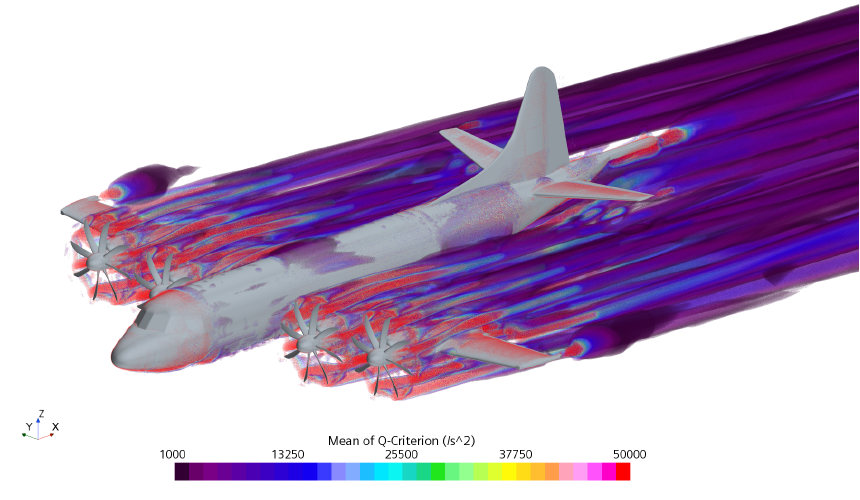
AA - Automotive Aerodynamic Shape Optimization¶
With the push in the automotive industry towards electrification, more manufacturers are looking to reduce drag on their vehicles. As such, there has been more emphasis on automated optimization routines to extract as much performance out of their designs as possible, largely focusing on gradient-based methods using adjoints. This research examines the effects additional constraints on aero balance and other performance quantities on the results of drag minimization, as well as sensitivities to ride height in optimization studies. [NP24a], [NP23]
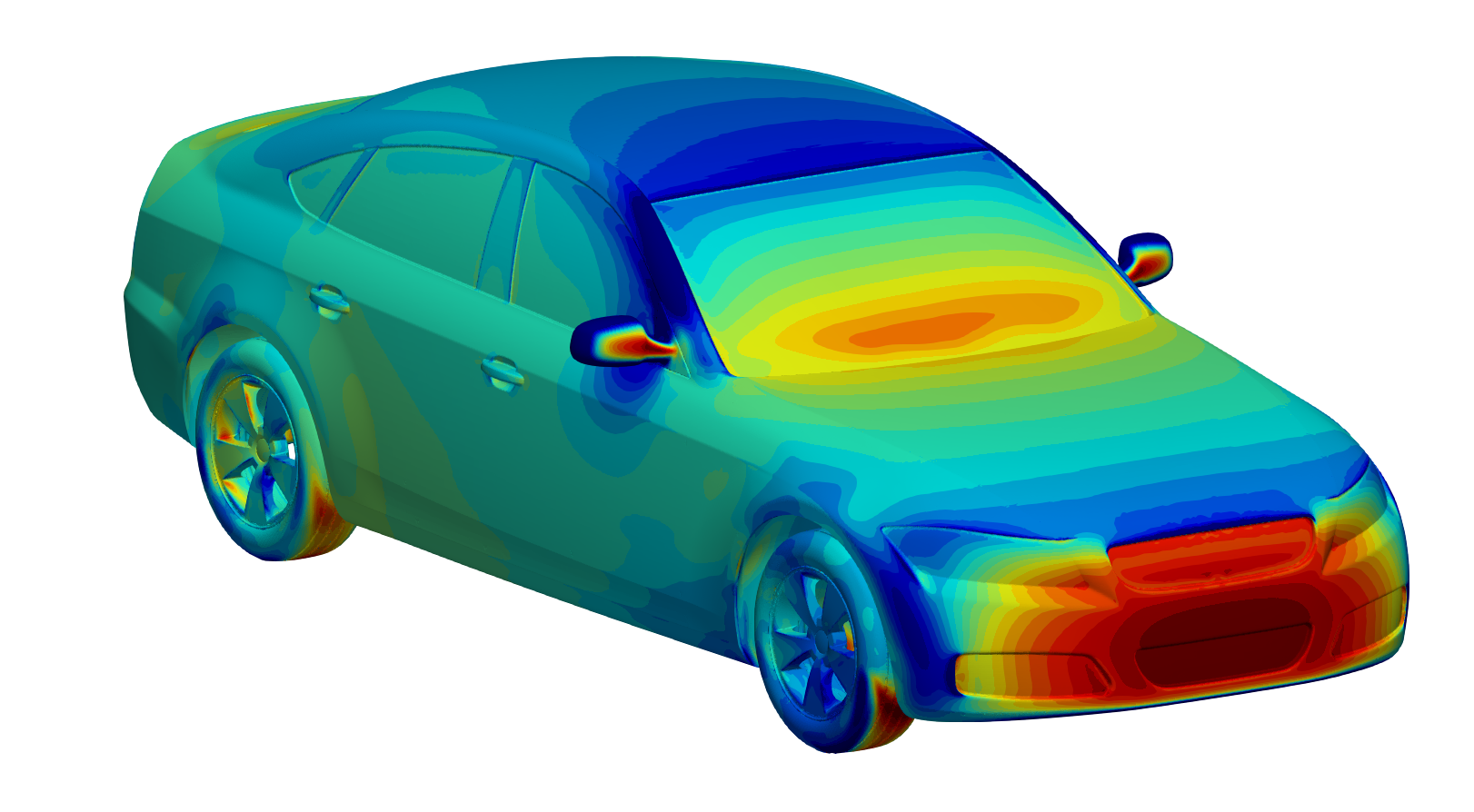

AI/GNC - Autonomous Soaring using Neuro-Control¶
This research explores the application of an artificial intelligence neuro-control for autonomous soaring. The approach provides explainable, implementable and robust neural-network controls that provide optimal flight trajectories that take advantage of atmospheric phenomena such as thermals to gain altitude and save an internal energy in autonomous vehicles. [KP23], [KP21a], [KP22], [PAJ20]
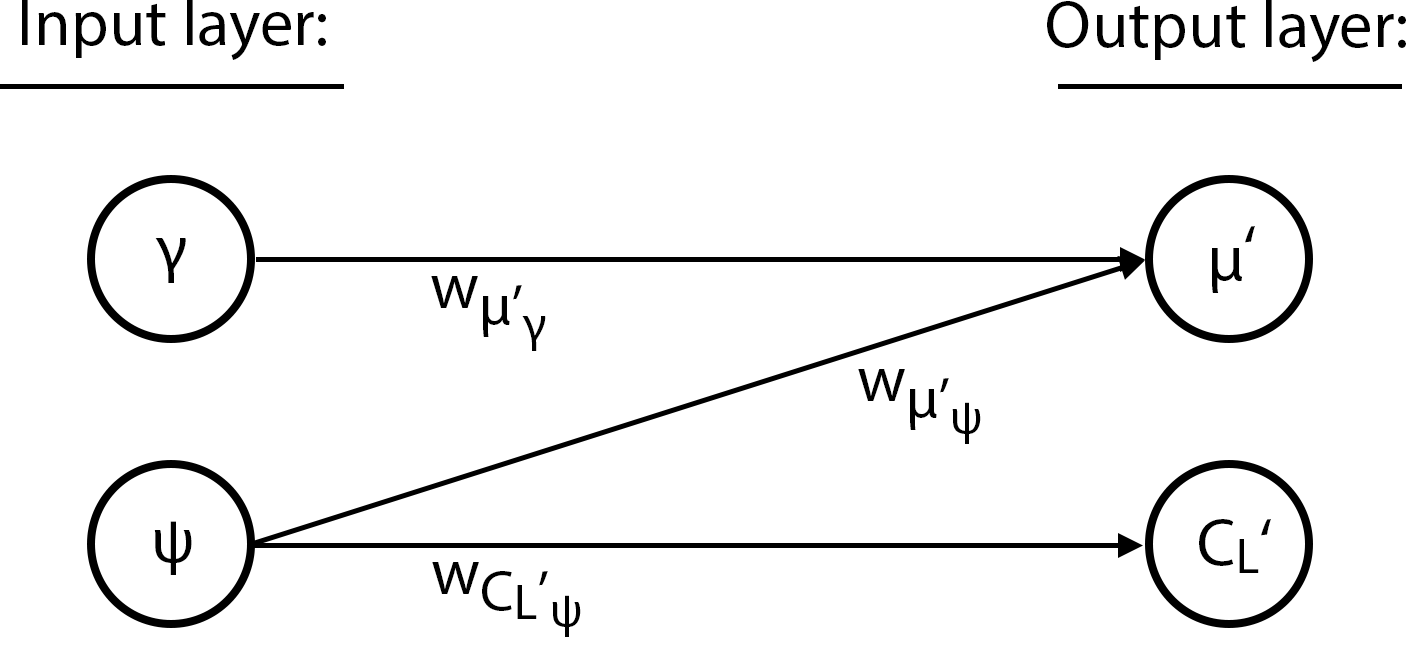
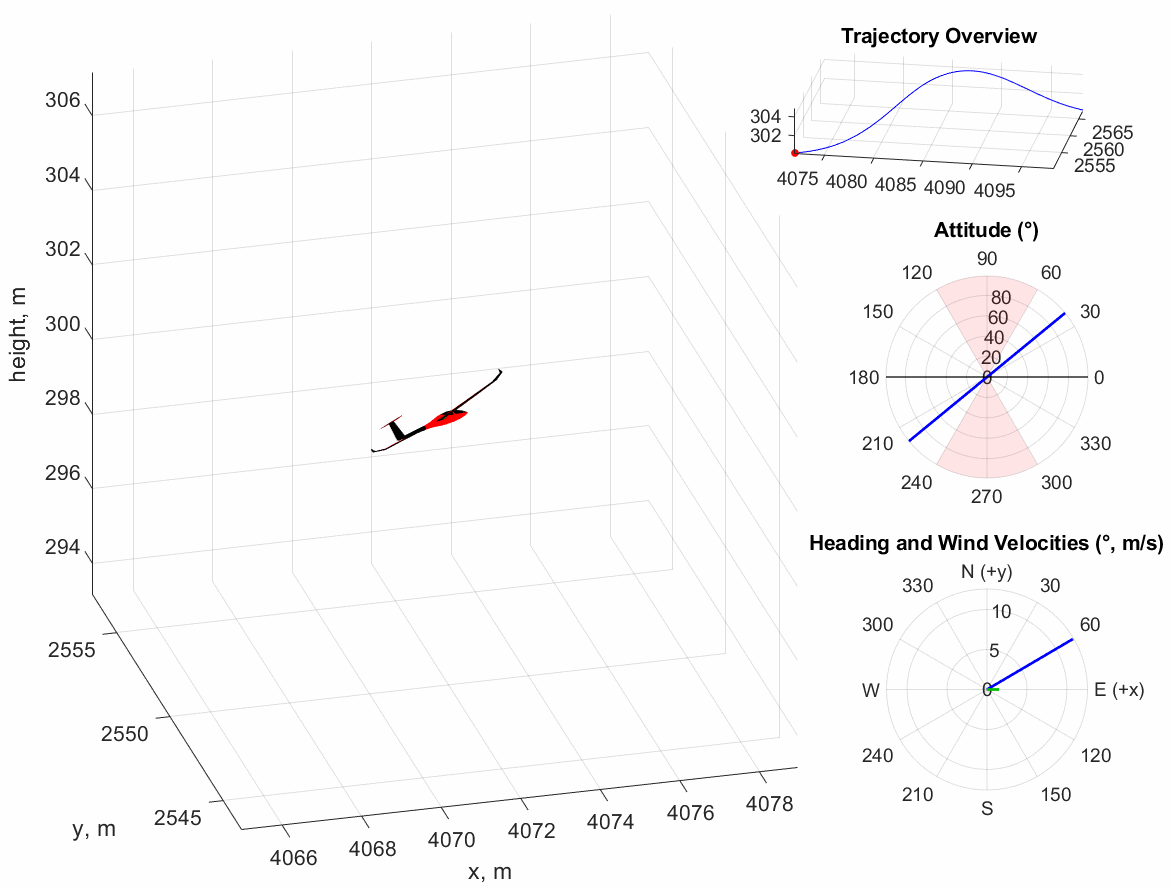
MDAO - Topology Optimization¶
This project develops and investigate a new computationally efficient and robust algorithm for topology optimization which is derivative free and based on equivalent stress rather than compliance.
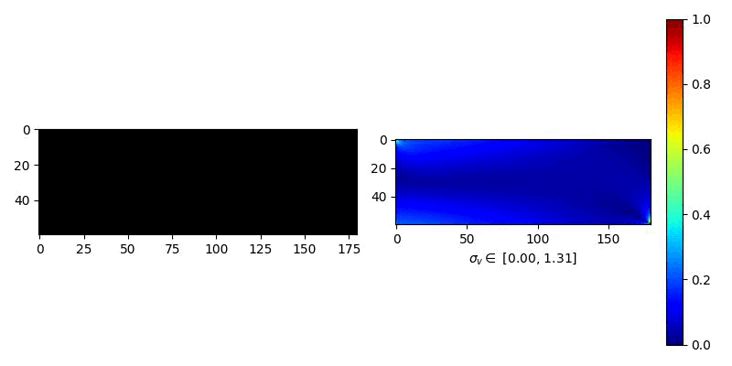
AA/GNC - Air-to-Air Refueling Aircraft Wake Analysis and Handling Qualities¶
Authorizing an air-to-air refueling tanker aircraft with a receiver aircraft requires a compatibility analysis and/or flight testing to demonstrate safe operation. With the possibility of military operations around the world, it is not always possible for aircraft to refuel in flight using an approved tanker aircraft. When military aircraft are deployed and require refueling from unapproved tanker aircraft, a risk assessment and special purpose flight permit is issued. Current research focuses on developing a computational tool that can assess the change in wake behind different air-to-air tanker aircraft and the resultant effect on the flight dynamics of the aircraft being refueled. [PP23], [PP22], [PPJ20], [PPJ19a], [PPJ18]

ACD/MDAO - Design, Optimization and Testing of Unmanned Aerial and Ground Vehicles¶
Supporting specific research projects or company sponsored research the group designs, develops and test different UAV and UGVs.
Some sample vehicles can be found as part of the laboratry facilities information on Experimental Vehicles
Previous Projects¶
AA - Application of Leading-Edge Tubercles to Propeller Blades¶
This study explores the effects on propeller performance and noise arising from the application of leading edge tubercles to a propeller blades. [APJA20], [APA19], [APA18]
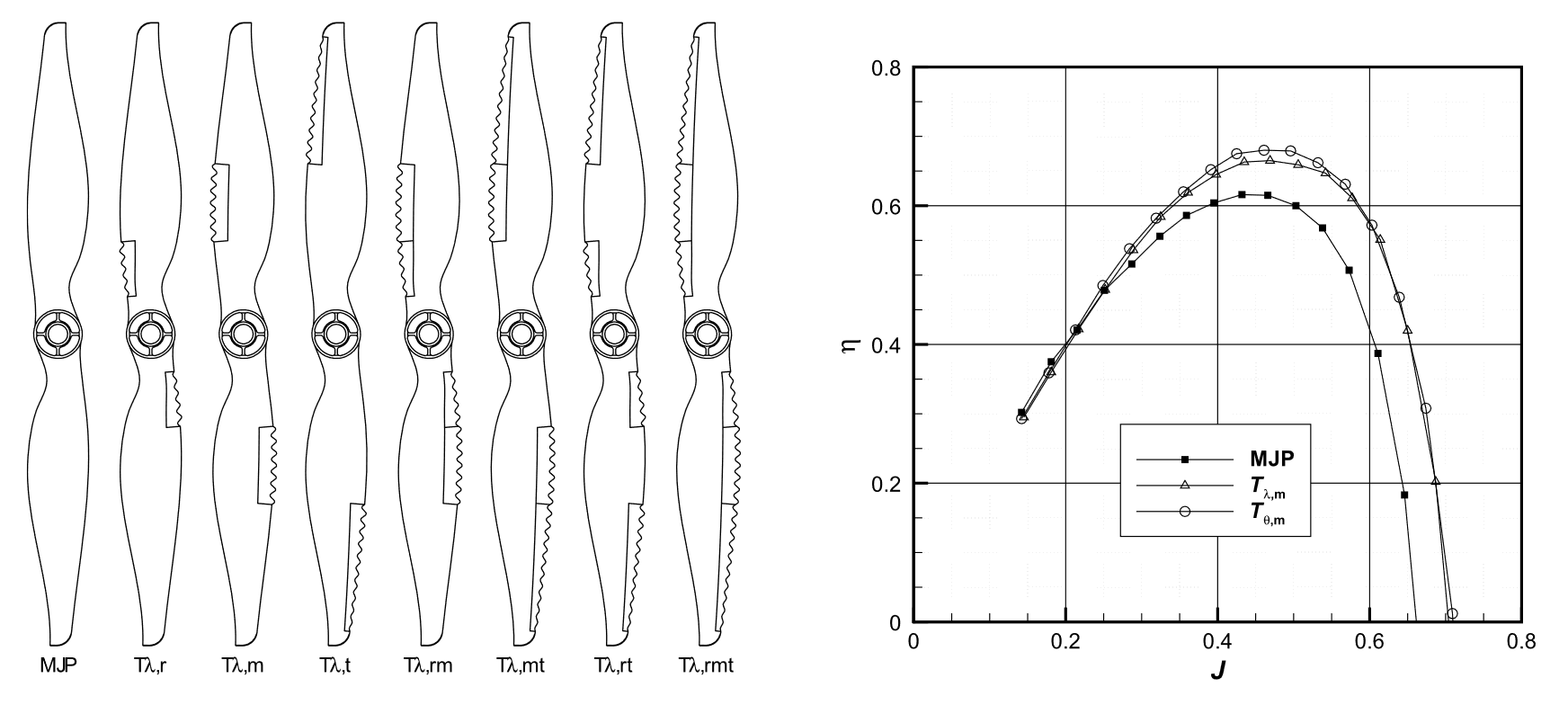
AA - Aerodynamic Characterization of Leading-Edge Tubercles¶
This research uses experimental and computational methods to explore the advantages and limitations of the application of leading edge tubercles, investigates the aerodynamic source of such improvements and provide an initial guide for the design of such passive flow control devices. [PPAA16], [PPAA17], [MPA19], [MPJ19], [RPA19b], [RPA19a], [SPAA20]
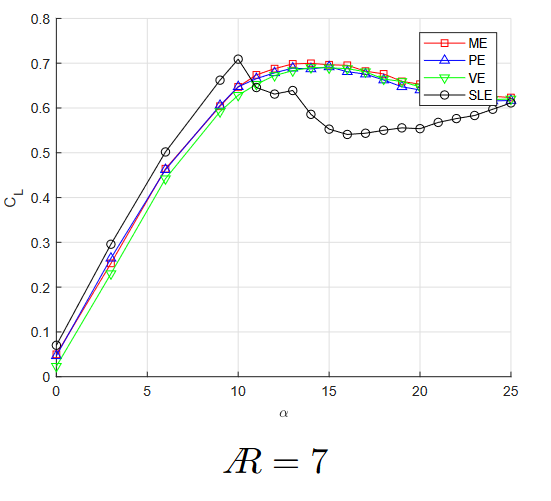
|
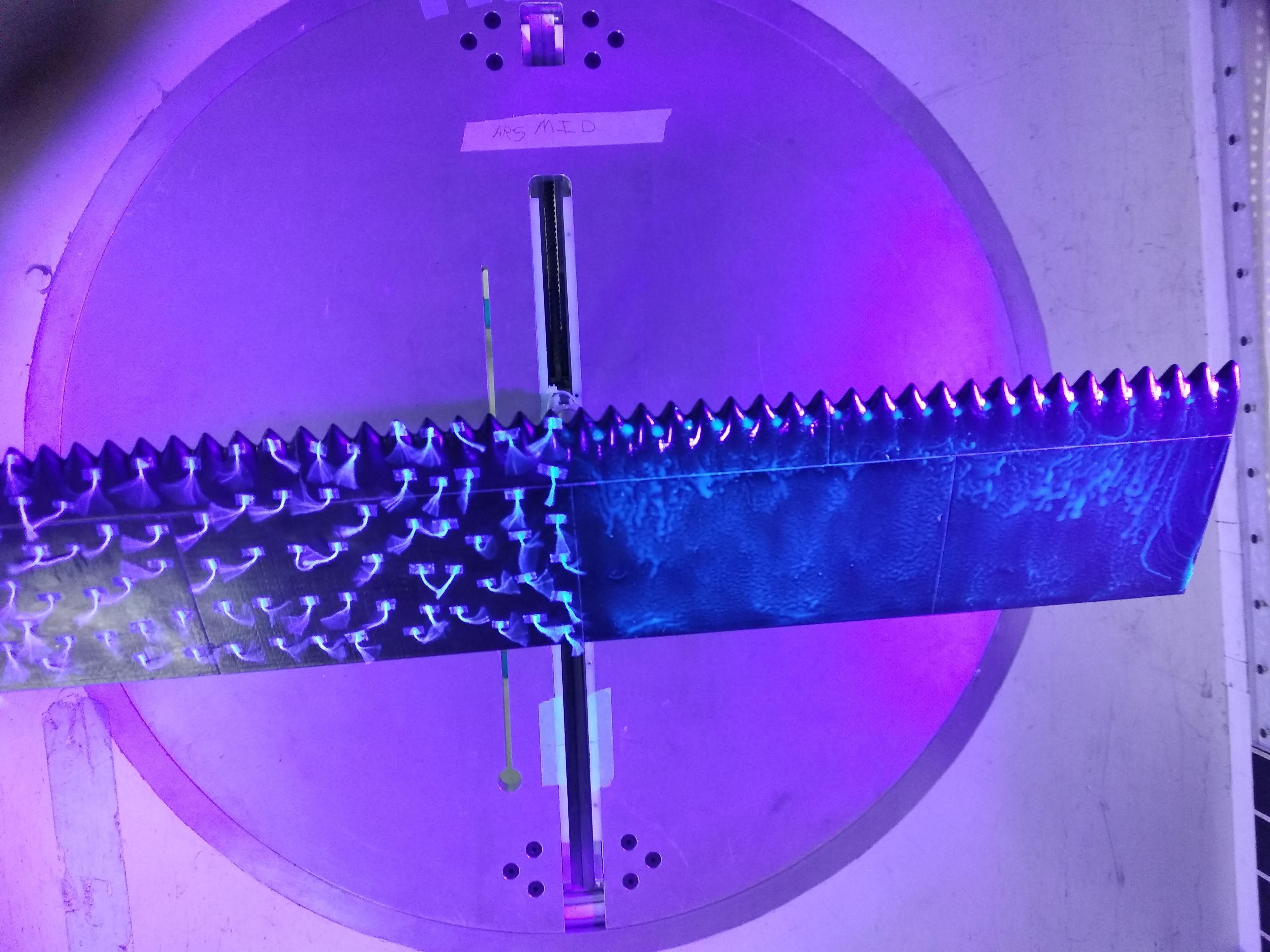
|
ACD - Technical Viability of Supersonic Business Jets¶
This research explores the technological improvements needed to achieve a viable supersonic business jet design, the sensitivities of such technology drivers as well as mission parameters, and the impact of operational considerations. [GGPJ18], [OPJ17]
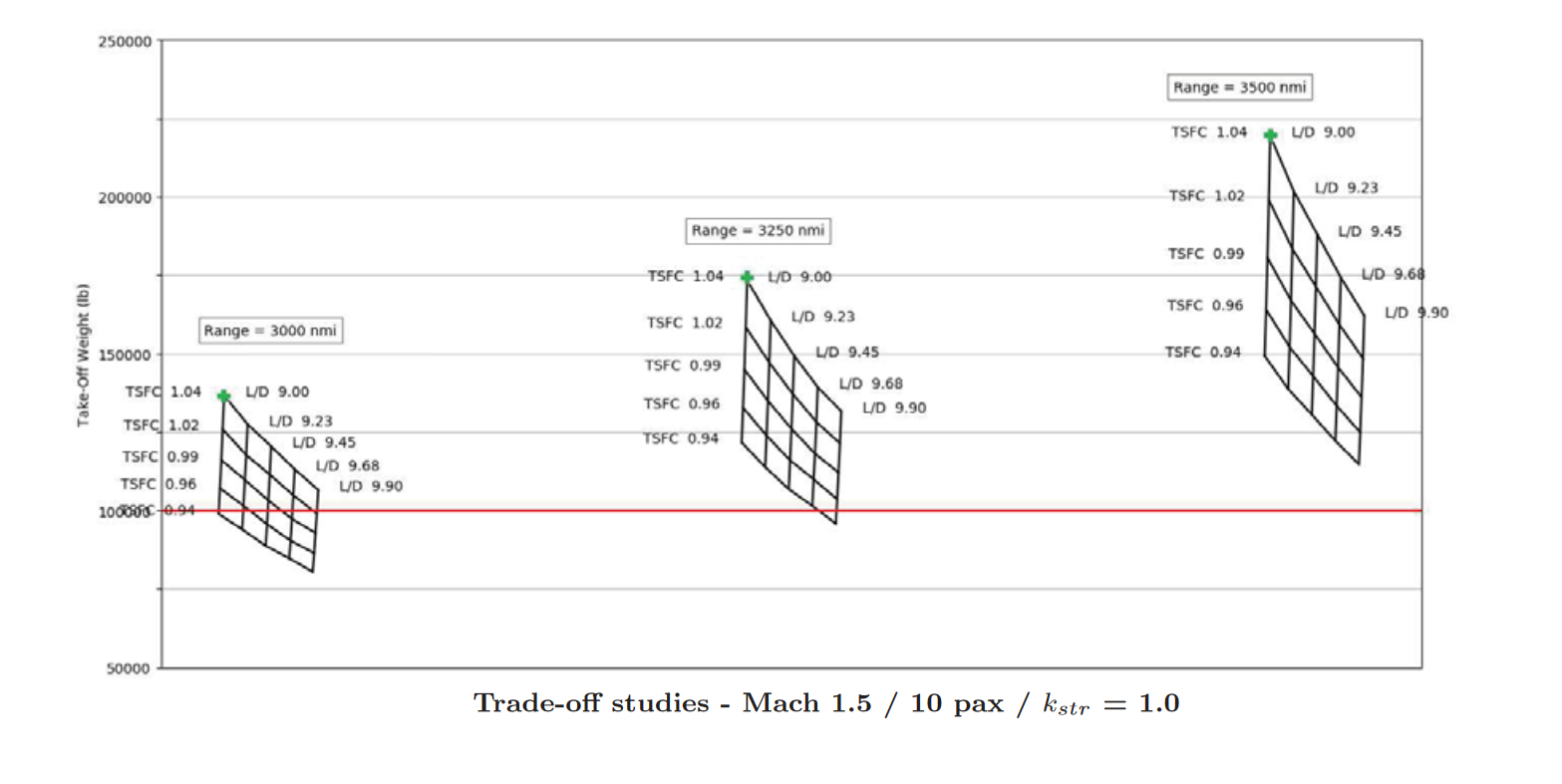
|
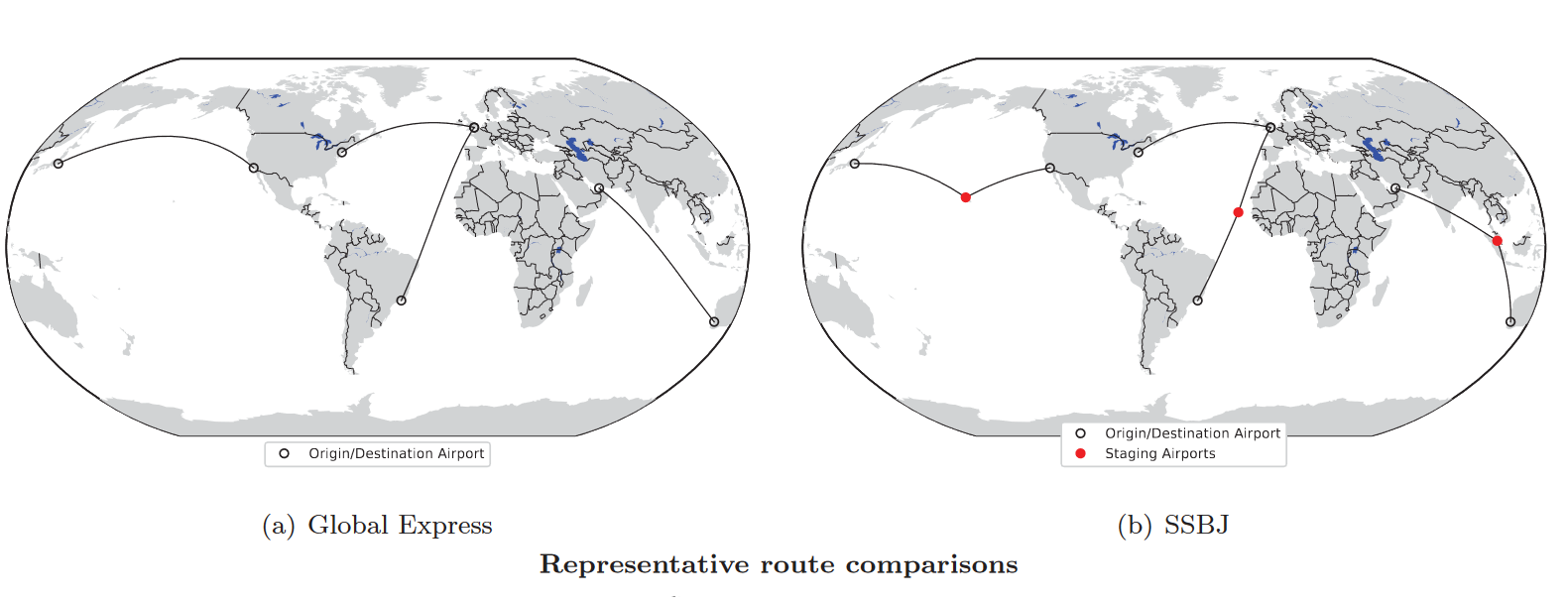
|
ACD/SOS - Aircraft Design and Intermediate (Staging) Operations¶
This research explored the tradeoffs in design and operations that arise from a coupled multi-objective optimization approach to aircraft design and staging allocation as applied to a real-world route network. [PJ17b], [PJ14]
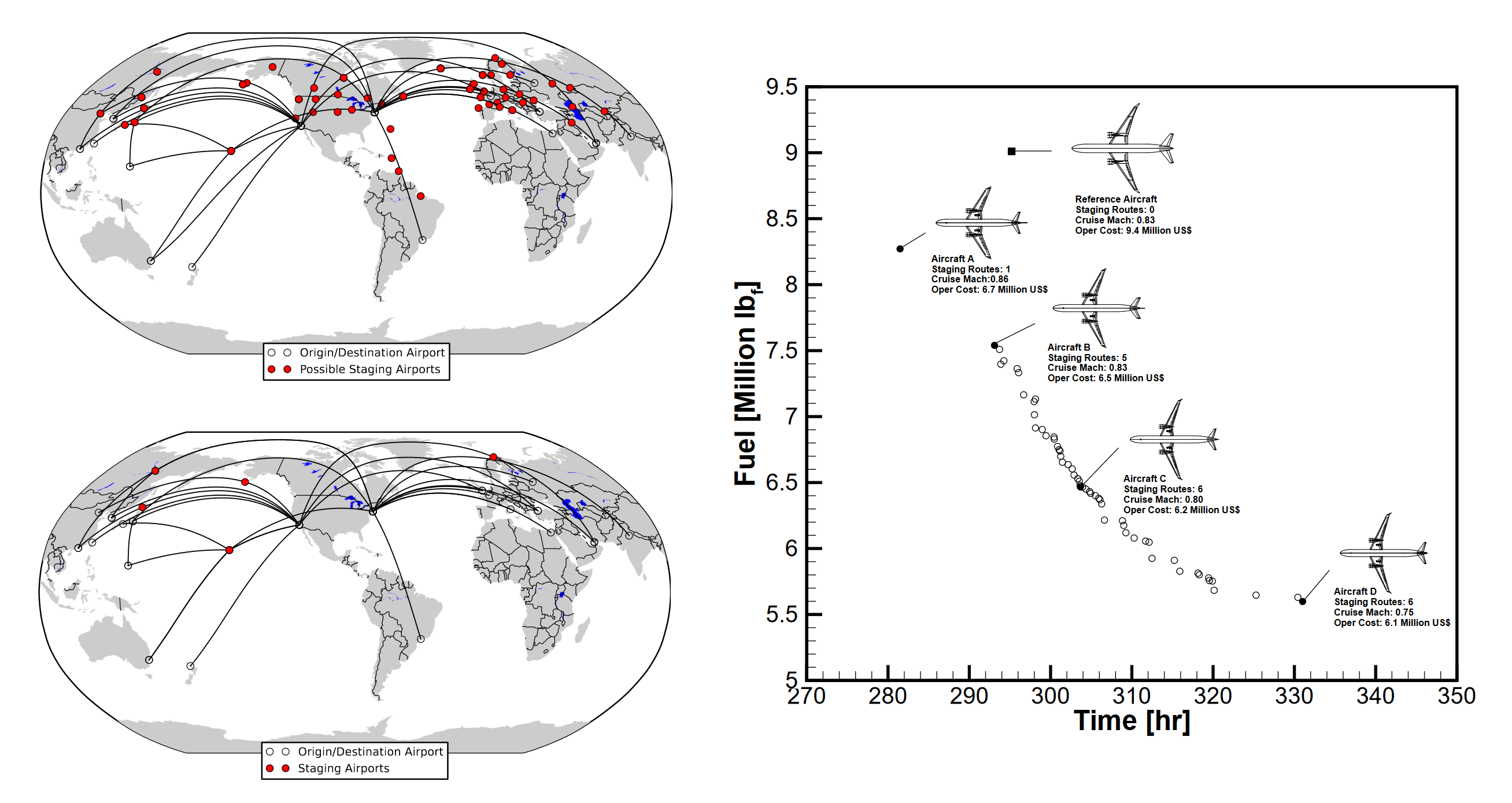
ACD/MDAO - Design and Optimization of Non-Planar Lifting Surface Aircraft Configurations¶
The use of non planar wings allow aircraft to achieve performance superior to conventional designs without exceeding airport span constraints or deviating dramatically from the standard wing and tube configuration. Regional jet aircraft have been shown to be well suited to a box wing design which allows the horizontal stabilizer to be removed while maintaining static stability. Current research focuses on examining the multidisciplinary interactions in the design of such an aircraft for a range of operating conditions to determine of a box wing is a viable configuration for a commercial transport aircraft. [AP18], [AP17], [AP15b], [AP15a], [AP14], [AP12].
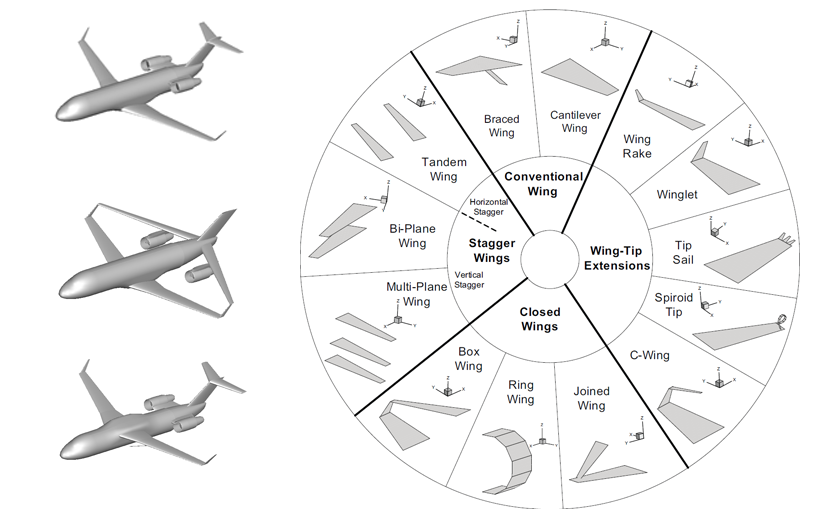
Examples of various non planar wings and aircraft making use of such configurations¶
AA - Aerodynamic Analysis of Sea-Gulls¶
This research investigated whether sea-gulls adopt a drooped wing-tip configuration during gliding as an aerodynamic optimum solution or as a result of constraints imposed by the gull’s anatomy. [APA13]
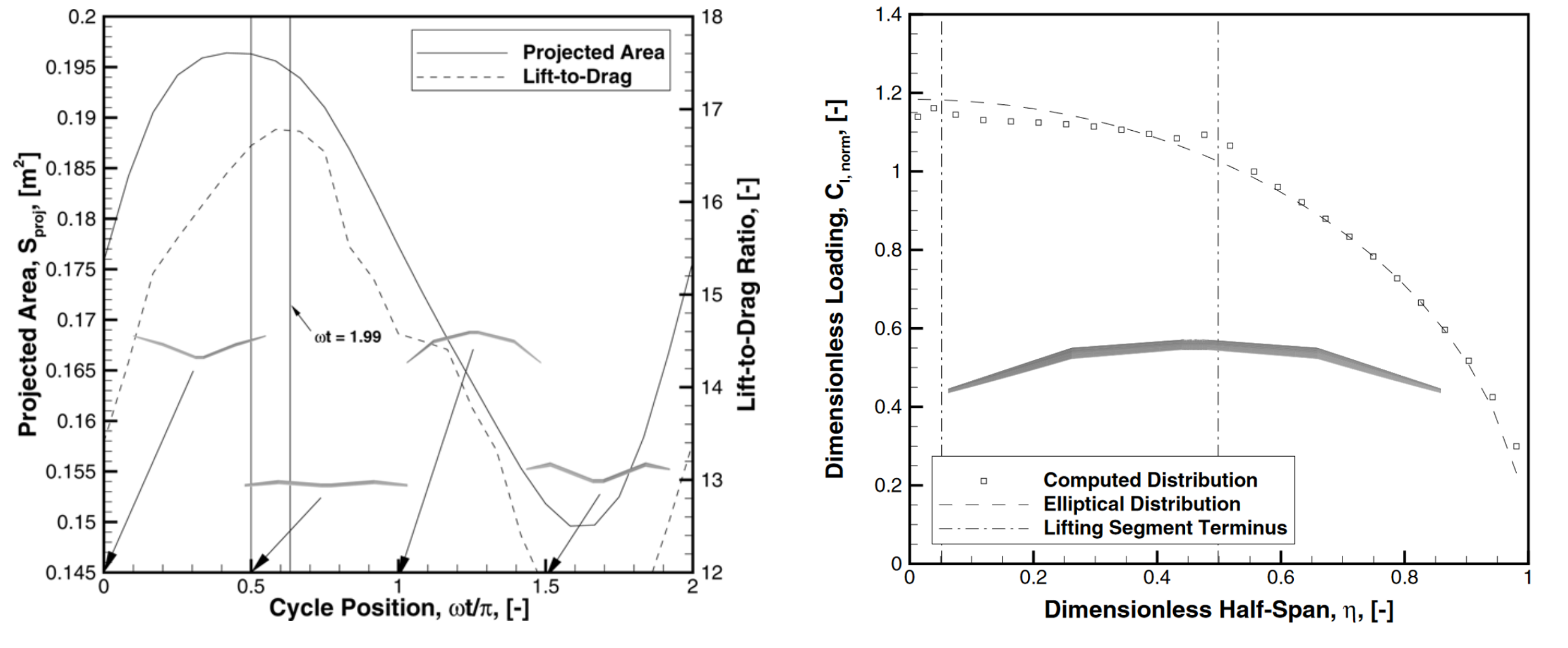
MDAO - Numerical Optimization Algorithms Development¶
To support other projects different optimization algorithms and efficient optimization integration frameworks such as pyOPT are continously being explored and developed [PJM12]. Of particular interest is the development of algorithms for multi objective, constrained, discontinuous, non linear, discrete, and time varying design spaces; area in which the lab has developed different approaches including ALPSO, an Augmented Lagrangian Particle Swarm Optimization algorithm (now included as part of pyOpt). [JP19], [PJM12], [JP11a], [RP09]
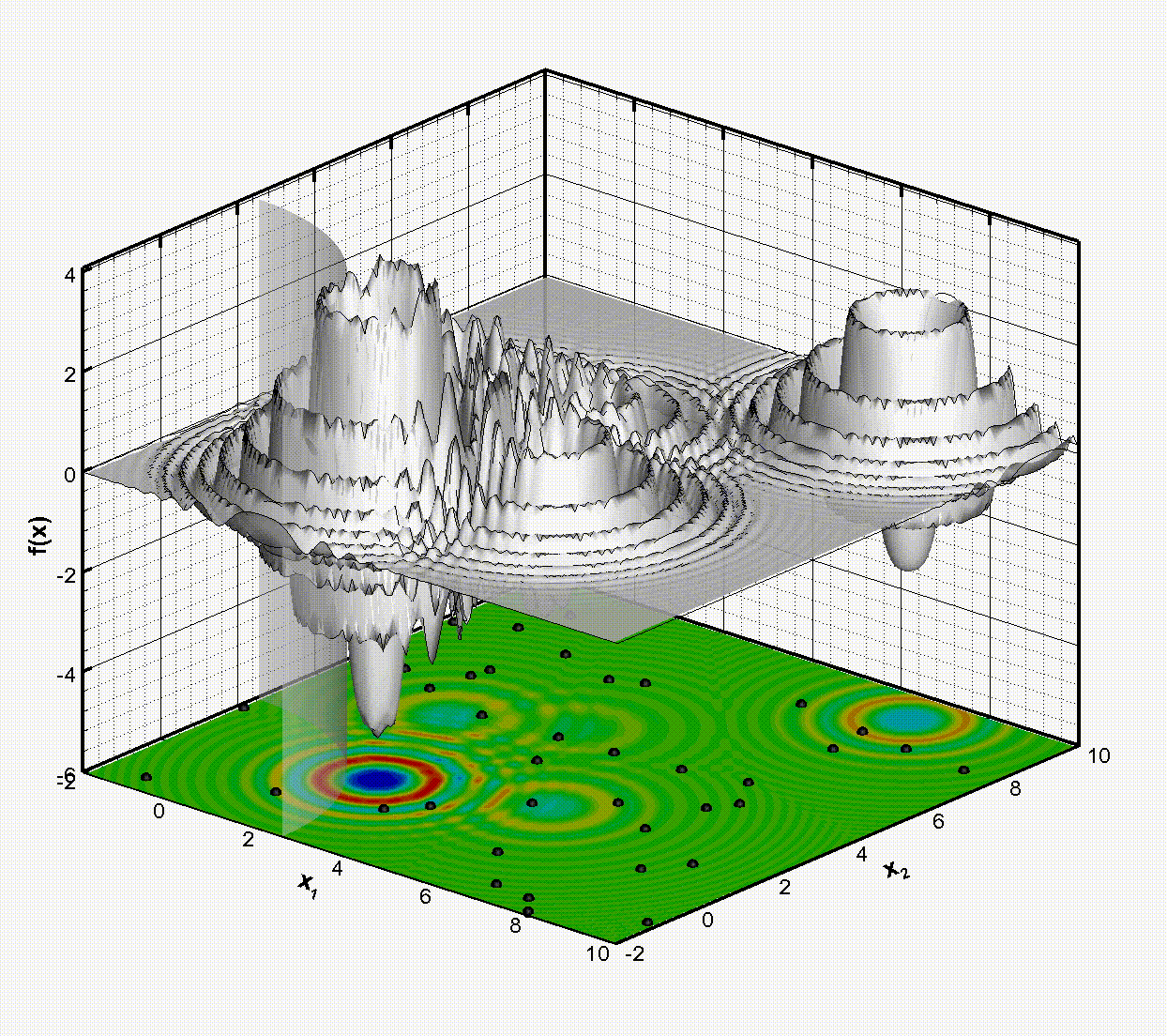
Example ALPSO optimization of Langermann function with dynamic constraint (feasible region on the right of the constraint)¶
ACD/MDAO - Conventional Aircraft Design for Minimum Environmental Impact¶
This research simultaneously optimized the aircraft and engine using a detailed steady zero dimensional thermodynamic propulsion analysis for several aircraft considering NOx emissions at landing and takeoff, fuel burn and direct operating cost, while including cruise Mach number and altitudes as design variables. It showed that low fuel burn designs benefit from high aspect ratio low sweep wings and fly at low Mach number and altitude. This trend is even more pronounced for minimizing NOx emissions at landing and takeoff, while low direct operating cost designs benefit from higher Mach numbers and hence higher swept, lower aspect ratio wings. [HMP12]. Other efforts in this area included the improvement of current combustor chambers emission prediction models. [HMP12], [LP12]
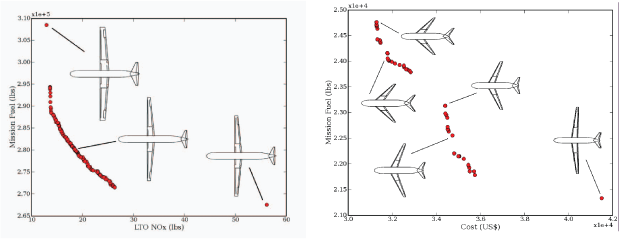
Pareto frontier of multidisiplinary optimizations of aircraft designed for minimum fuel burn and NOx (left) and minimum fuel burn and cost (right)¶
ACD/MDAO - Aero-Structural Optimization of Non-Planar Wings¶
This work explored the aerodynamic and aero structural design optimization of non planar wings to maximize cruise range performance while considering different loading conditions as well as the effect of aircraft size and mission requirements. It was found that for medium range aircraft the optimal multidisciplinary solution was a wing plus winglet configuration when the total span is constrained, and a wing plus raked extension configuration when the span of the design was not constrained. In these configurations, the wing extensions provided a higher lift to drag ratio at cruise condition and tip loads were alleviated at the critical manoeuvre condition by shifting lift distribution inboard, hence reducing the critical load on the structure. When short range aircraft are considered a joined wing configuration is prefered as it allows for significant reduction in structural weight, while maintaining similar aerodynamic performance as compared to a conventional wings. For long range aircraft the trade off between aerodynamic efficiency and structural weight shifts towards aerodynamics were the best aero structural configuration was a C wing which provided significant reduction in vortex drag compared to a planar reference case as well as less area and lower viscous drag added compared to other non planar configurations. [JPM10], [JP10].
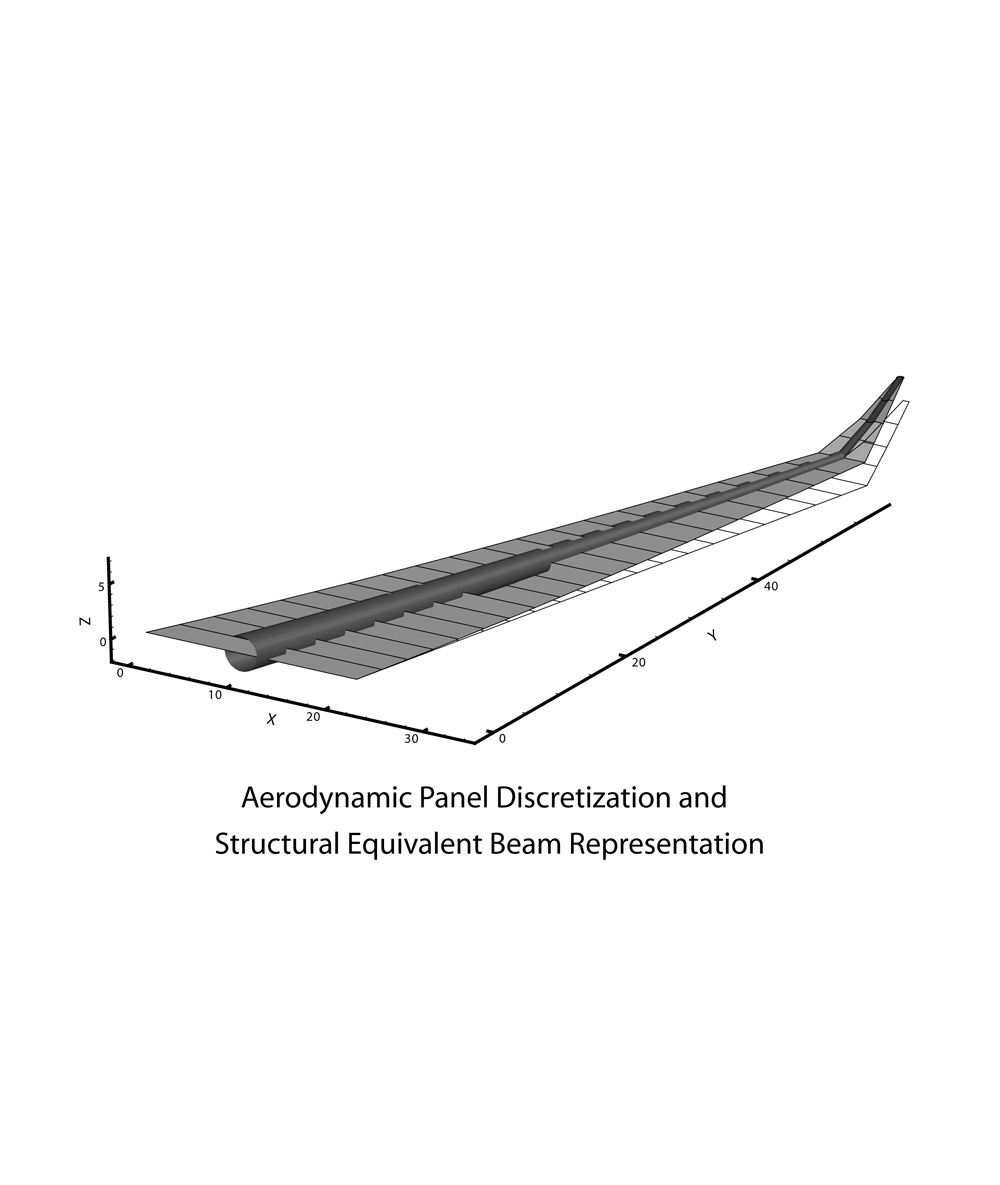
Optimum Aero structural Configurations and Wing Loading for Different Aircraft Size and Mission Requirements¶
GNC - Trajectory Optimization for Autonomous Soaring¶
Exploring optimal flight strategies and control algorithms to take advantage of different atmospheric phenomena such as thermals to gain altitude and save an internal energy in autonomous vehicles.
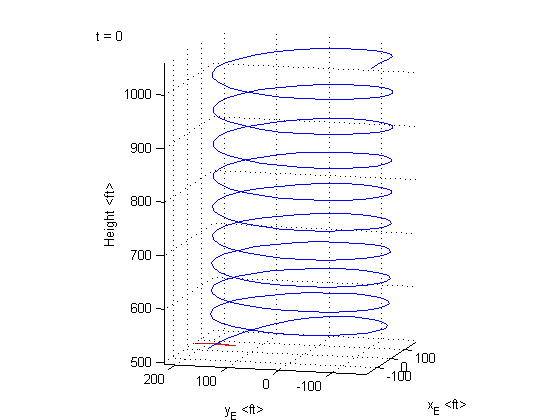
Trajectory optimization example of a glider thermal energy maximization climb¶
Sponsors and Collaborations¶
We are thankful to the following organization for providing research funding:

Ce site web n’est pas une publication officielle du Collége militaire royal du Canada ni du Ministère de la défense nationale
